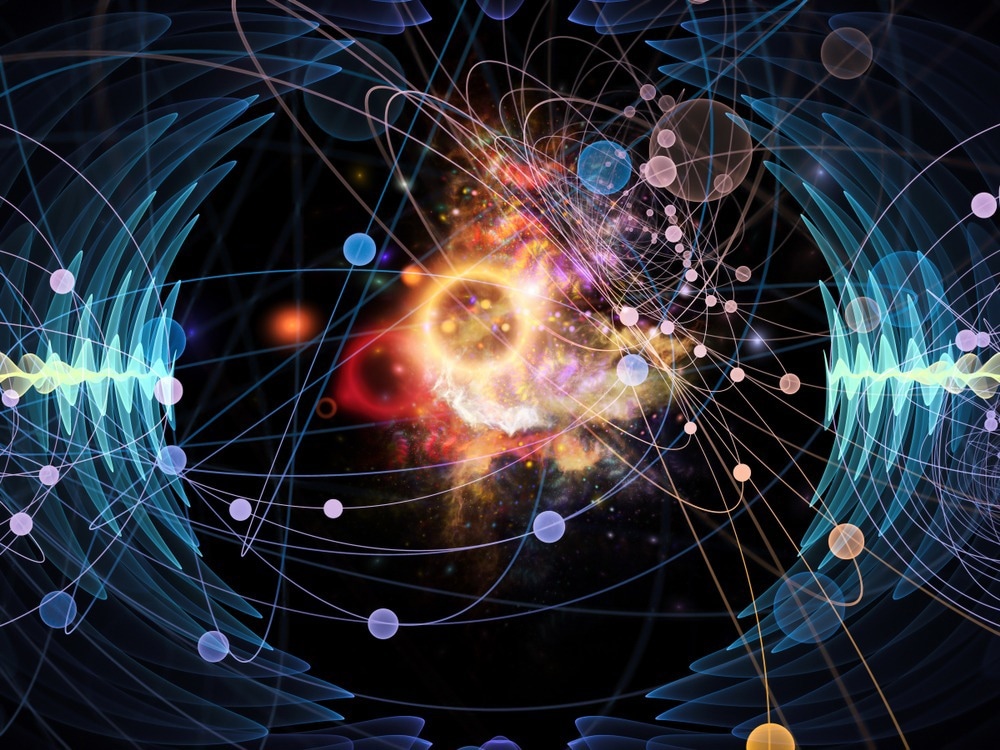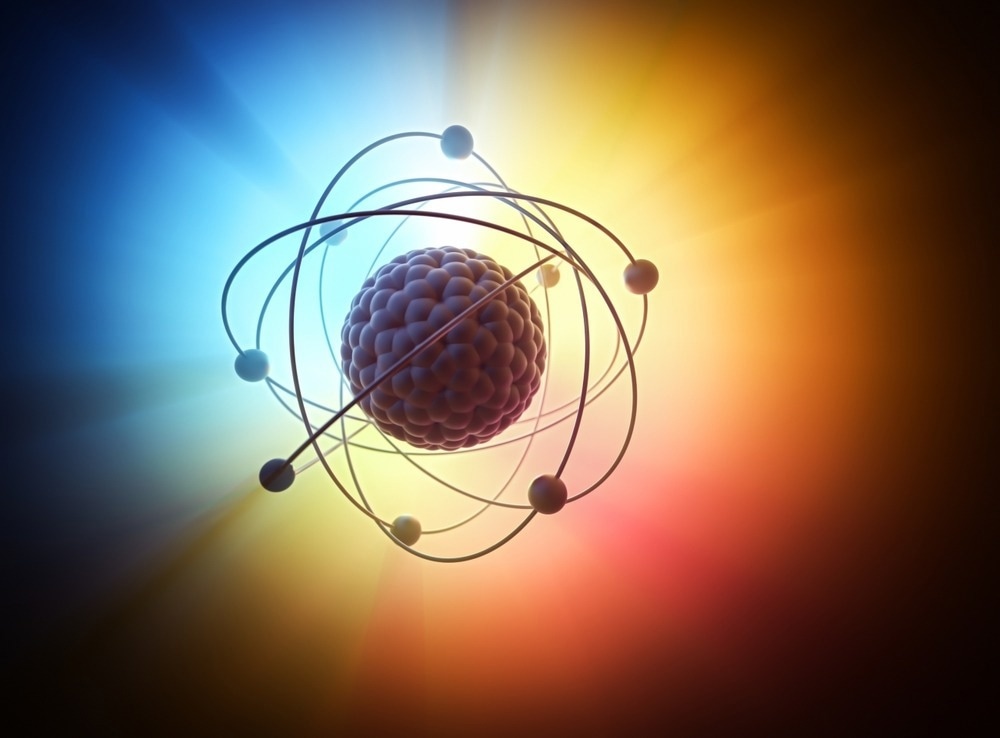The study of how light interacts with objects at the picometer scale is known as picophotonics. In order to explain the electrodynamic dispersion of the photon field, a team led by Prof. Zubin Jacob at Purdue University developed a Maxwell Hamiltonian theory of matter along with the quantum theory of atomistic polarization.

Image Credit: agsandrew/Shutterstock.com
New developments by the research group of Prof. Zubin Jacob utilized artificial intelligence to analyze electron or topologically structured light scattering from nanostructures in order to show dimensional metrology. Published in the journal PHYSICAL REVIEW APPLIED, detection of changes at the interaction location over time can be resolved on nanometer to picometer scales.
Demonstrations of these methods show that they may be used to characterize and improve nano-optomechanical metamaterials as well as conduct basic research on the physics of phonons in photonic nanostructures and the dynamics of thermal motion.
Extensive research has been done on the idea of photonic frequency and momentum dispersion in artificial dielectric structures like photonic crystals and metamaterials. These synthetic materials are artificially fabricated of multiple macromolecules.
Electrodynamic excitations that alter properties like periodicity and symmetry of the material can occur in natural media as well. These are not characteristics of a type of macroscopic engineering but rather the qualities of matter itself. The dispersion of electrodynamic excitations hosted at the atomistic level in natural materials has, however, received far less attention. Therefore, natural materials that have a range of electrodynamic waves and topological photonic features have not yet been observed.
Theory Development
Their research efforts defined the dielectric tensor for atomistic materials first. Due to short-range electronic correlations in crystalline materials, long-wavelength disturbances can result in short-wavelength reactions. The local-field effect has been used to describe this phenomenon. The microscopic fields are averaged over a space that is larger than the lattice constant to produce the macroscopic field.

Image Credit: ktsdesign/Shutterstock.com
A linear response theory was implemented to calculate the transverse atomistic dielectric tensor. The atomistic longitudinal dielectric response, including the local-field effects, is calculated using the Adler-Wiser formulation. The optical response of a material can be calculated using first principles, and the Adler-Wiser equation for the dielectric function has long been considered the gold standard. However, the atomistic transverse dielectric tensor governs a material's reaction to a photon field. Prof. Jacob’s group built a quantum theory that takes into account local-field effects.
The theoretical formulation was extended to describe the atomistic nonlocal electrodynamics of matter based on the Maxwell Hamiltonian. The Maxwell Hamiltonian in matter is similar to the Dirac Hamiltonian in that it depends on the spin-1 behavior of photons.
The pico-photonic Bloch function and the pico-photonic eigenvalue equation for the electrodynamic field were also developed.
The theoretical descriptions were then used to determine a material's atomistic electrodynamic dispersion. The relationship between photons and massless fermions in the Dirac equation, specifically in free space, has been understood using the Maxwell Hamiltonian. In order to forecast novel topological electrodynamic phases of matter, the objective was to create the Maxwell Hamiltonian formalism and, for the first time, apply it to silicon, a semiconducting material.
Experimental Implementation
To derive the atomistic electrodynamic dispersion in Si, the Maxwell Hamiltonian framework was employed. The results demonstrate the presence of anomalous atomistic waves in silicon's bandgap. In order to recover well-known waves and demonstrate that these new waves are the outcome of atomistic electrodynamics, direct comparisons with existing well-established theories were made.
To investigate the atomistic picophotonic dispersion relation in silicon, the electromagnetic wave that naturally interacts with a Si block is experimentally manipulated. While the energy of the wave is controlled in carefully selected spectral regimes, atomistic electrodynamic dispersion controls the crystal's momentum.
The outcomes of these experiments were tested on different materials and the data were analyzed to account for the local field contributions.
Results and Outlook
The Maxwell Hamiltonian, which incorporates the spin-1 character of photons, sheds new light on the electrodynamics of matter. Anomalous waves have been identified in silicon's atomistic electrodynamic dispersion using this approach. To generate the anomalous waves in the atomistic electrodynamic dispersion, it is crucial to include local-field effects in the Maxwell Hamiltonian.
The findings show that various intriguing electrodynamic phases can exist inside natural media by themselves. Since they are properties of matter itself, the electrodynamic phases that were addressed in this research have nothing to do with any kind of macroscopic engineering.
The significance of the atomistic electrodynamic phases of matter is highlighted by the results presented here. There is a pressing need to develop atomistic nonlocal electrodynamics of matter based on first principles in order to acquire the atomistic electrodynamic dispersion of natural materials. To uncover novel phenomena related to atomistic electrodynamic dispersion, further development of pico-photonic electrodynamic density functional theory for photons hosted by matter is needed. The first step towards finding topological photonic features in natural materials is provided by this analysis.
More from AZoOptics: What is Photoelectron Spectroscopy?
References and Further Reading
Sathwik Bharadwaj, Todd Van Mechelen, and Zubin Jacob. Phys. Rev. Applied 18, 044065 – Published 27 October 2022. url = https://link.aps.org/doi/10.1103/PhysRevApplied.18.044065
Pierce, C. (November 16, 2022) Researchers unlock light-matter interactions on sub-nanometer scales, leading to 'picophotonics.' [Online] Phys.org. Available at: https://phys.org/news/2022-11-light-matter-interactions-sub-nanometer-scales-picophotonics.htm
Disclaimer: The views expressed here are those of the author expressed in their private capacity and do not necessarily represent the views of AZoM.com Limited T/A AZoNetwork the owner and operator of this website. This disclaimer forms part of the Terms and conditions of use of this website.